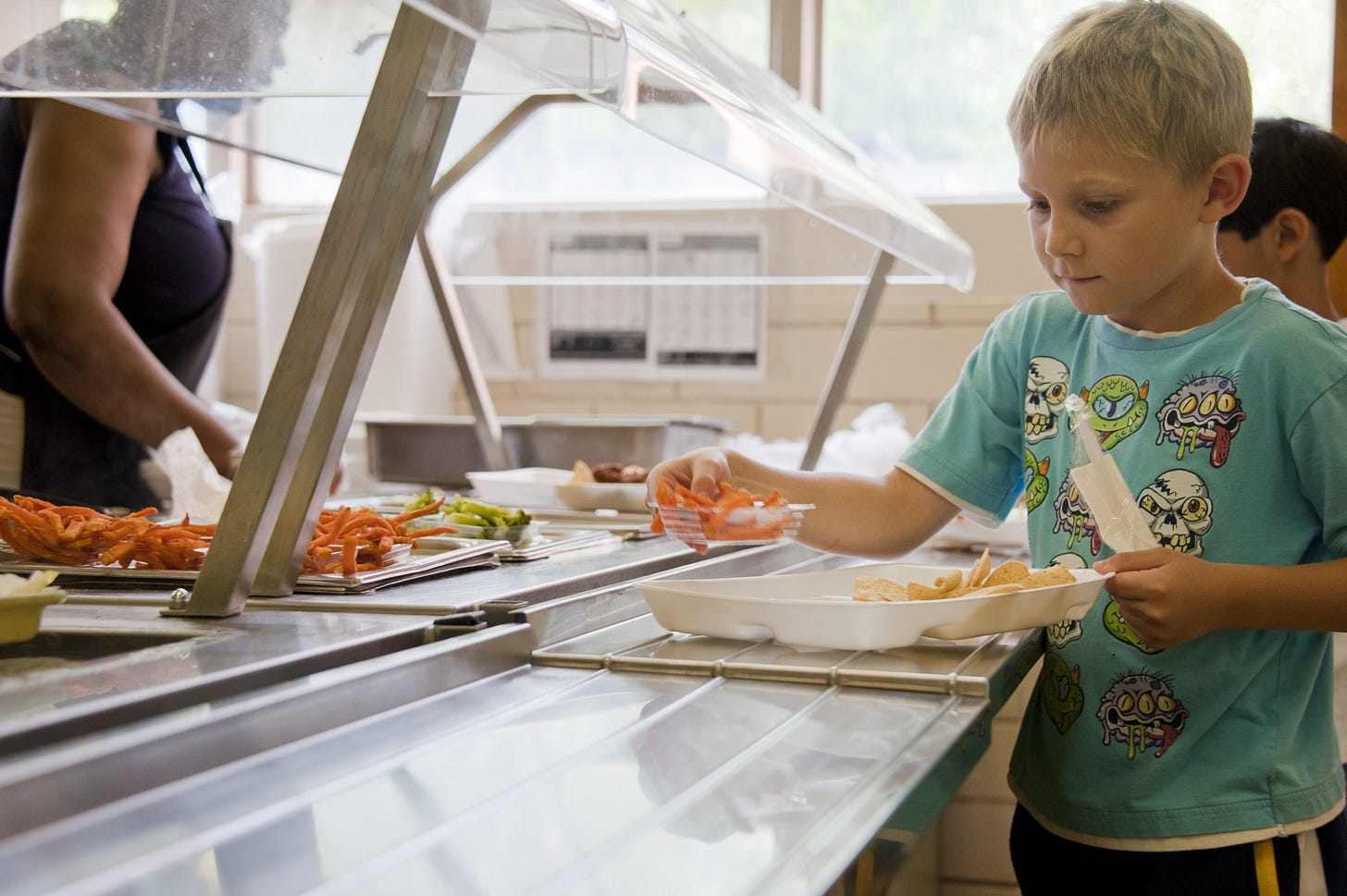Could Robots Save School Lunches?
Cafeterias face even greater labor issues than restaurants.
I swear that I don’t think that robots are the solution to every problem afflicting our food chain… but having said that, it seems like robots might actually be a really good fix for some of the problems currently afflicting school cafeterias.
Earlier this week, The Washington Post ran the headline “The cold truth about hot lunch: School meal programs are running out of food and workers.” You should definitely read the entire article (it is heartbreaking), but in a nutshell, it all comes down to labor and supply chain issues.
I’m not being glib when I say that robots could help. And not just because of labor and cost issues, but also because kids deserve better. According to SchoolNutrition.org, pre-pandemic, schools served lunches to 29.6 million students a day (nearly 22 million for free or reduced price); and breakfasts to 14.77 million students each day (more than 12 million free or reduced price). For many kids, schools can be the only place where they can actually eat a meal.
So I am saying this in all sincerity, perhaps robots can help school districts and by extension help out our nation’s kids.
Labor
The robots I’m thinking about here are the all-in-one robots from companies like Karakuri and RoboEatz. These self-contained robots store a number of hot and cold ingredients that can be heated and assembled into a variety of meals. Both robots can also create cold meals like yogurt parfaits or granola bowls to serve breakfasts as well.
The obvious advantages to robot workers is that they don’t get sick, don’t take breaks and they can pump out meals. Karakuri’s Semblr (which just started feeding 4,000 workers at Ocado’s headquarters), can make 110 meals an hour, and the RoboEatz Ark-3 produces a meal every 30 seconds. Those numbers might even get a boost if you limited the number of ingredients and meals offered.
The key is speed. The robots would need to feed a bunch of kids in big chunks as various classes make their way to the lunchroom. There would be some nuts and bolts to work out such as ordering and pick up, but those don’t seem insurmountable.
True, these robotic systems would replace some human workers, but as the WaPo article pointed out, many school districts already have 20 - 25 of their foodservice jobs still vacant. And, schools have a harder time finding workers because of the extensive background checks required.
Cost
Food costs and distribution are more challenges for the school cafeterias right now as distributors don’t have enough drivers to make deliveries and the cost of food is going up.
While a robot can’t bring the cost of food down, it can help a school maximize the inventory it has beacuse robots have portion control. They apply the same amount of food to each meal every time with no waste. This means schools can use more of what they have, and better plan for future food purchases.
Allergens
This wasn’t mentioned in the Post article, but food allergies are a big deal in schools. My son, for example, came home with a note the other day asking him to not bring in any food with tree nuts in it (which is totally fine!). Systems like the Semblr and Ark-3 both store ingredients in separate chambers, so there is no cross contamination, and no allergens accidentally spilling into any other food.
Clean Up
Robots don’t just need to cook the meals, they could be used to clean up as well. A service like Dishcraft uses a combination of off-site robots washers an reusable containers to create dishes-as-a-service and is specifically built for places like cafeterias. (Though they are only in the Bay Area right now).
I don’t think the issues brought up in the Washington Post piece are easy to solve. They are incredibly complex with a host of other complications that I haven’t touched on. But just as robots can help private sector restaurants, I think it’s worth considering them for school foodservice as well.


